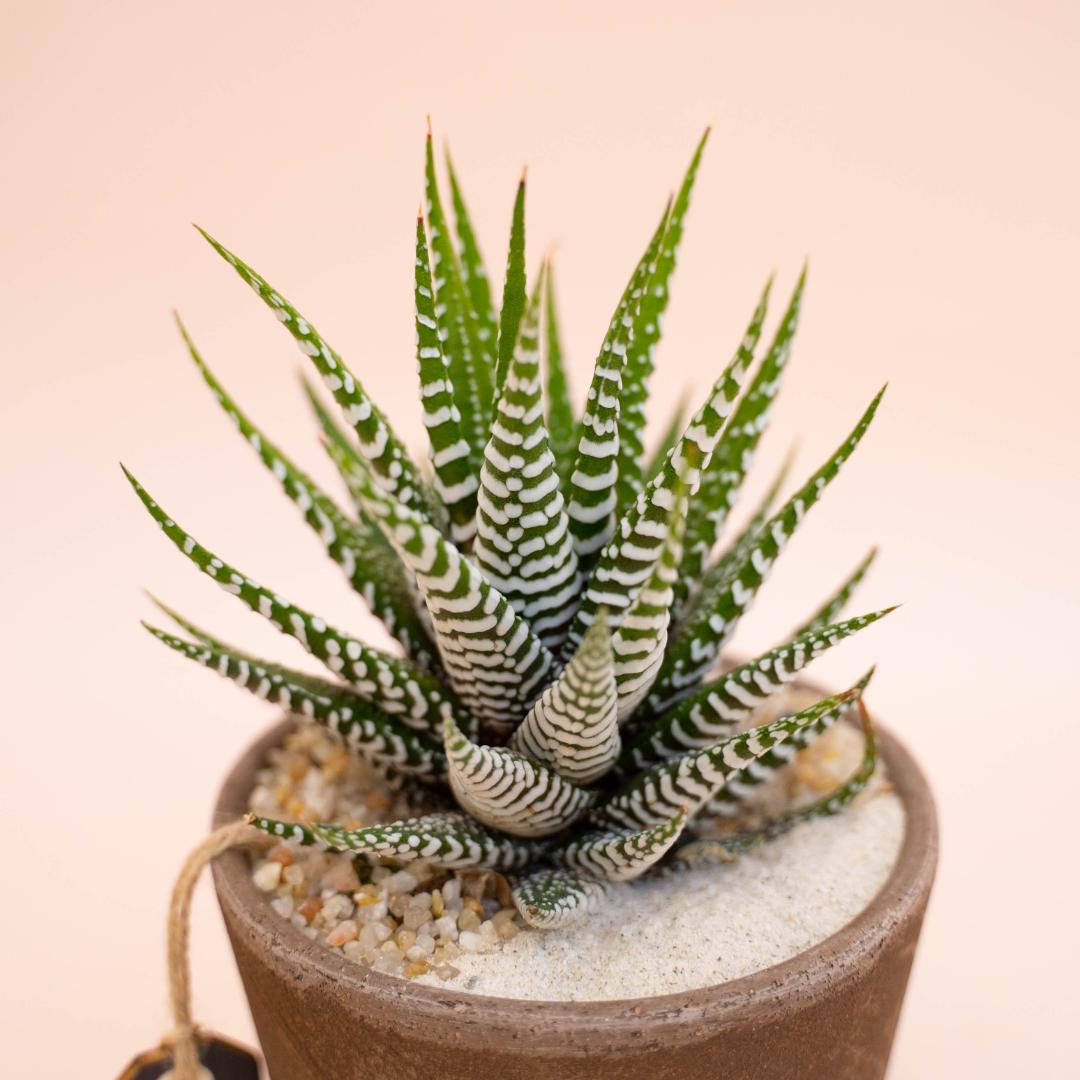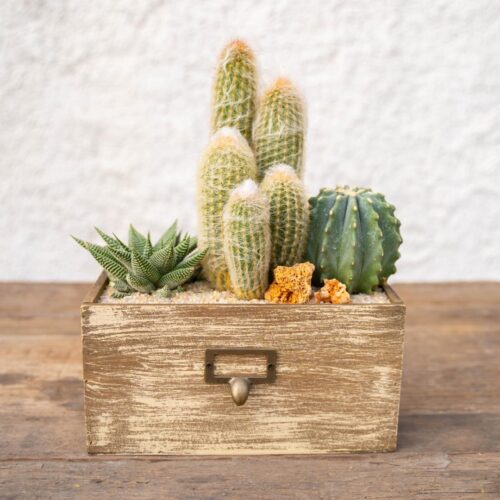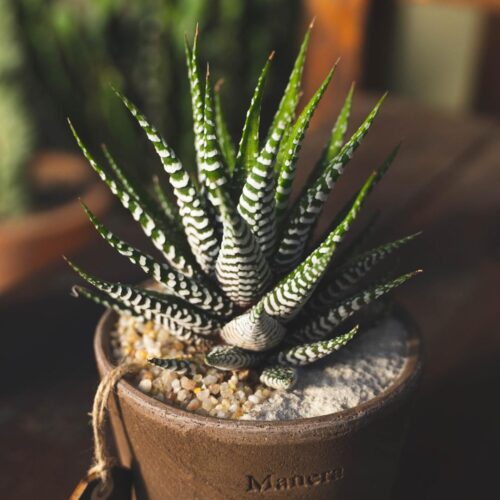Haworthia fasciata is one of the most beloved succulent plants among botany and gardening enthusiasts. Native to South Africa, this plant stands out for its fleshy, variegated leaves that exude an exotic and vibrant charm. Its slow growth makes it ideal even for those with limited space. Beyond its striking appearance, it is remarkably hardy and easy to care for—qualities that have solidified its popularity in gardens and homes. The various cultivars of Haworthia fasciata further enrich this plant, offering diverse shades and forms.
Botanical characteristics
Haworthia fasciata has a distinctive look, thanks to its thick, dark green leaves adorned with white stripes that appear almost hand-painted. It can reach a height of about 15 cm and grows in a rosette shape, with leaves arranged in a spiral. This plant is renowned for its adaptability: it thrives both in pots and in the ground, making it perfect for a wide range of environments. Often used as an ornamental plant, it is ideal for decorating homes or offices, bringing a touch of nature even to urban spaces. Its resilience also makes it a great choice for beginner gardeners venturing into the world of houseplants.

Cultivation guide
Soil
To ensure healthy growth, Haworthia fasciata requires well-draining soil. A cactus mix is ideal, as it promotes proper aeration and drainage, preventing root rot, which can occur if the roots remain too moist.
Watering
Watering is crucial for this plant’s care. Overwatering must be avoided, as it can damage the roots. As a general rule, water Haworthia fasciata only when the soil is completely dry. During warmer months, watering every two weeks is sufficient, while in winter, it’s best to space out watering even more.
Light exposure
This plant thrives in indirect light. A bright spot away from direct sunlight is ideal for promoting healthy growth. Direct sun exposure may cause the leaves to fade or become damaged. Haworthia fasciata also tolerates shade well, making it versatile for low-light rooms.
Pruning and fertilization
Pruning is unnecessary, but removing dry or damaged leaves helps maintain a tidy appearance. For fertilization, a diluted liquid cactus fertilizer applied during the growing season (following package instructions) is sufficient.
Disease prevention
While Haworthia fasciata is generally disease-resistant, monitoring its health is still important. Regularly inspect the leaves for pests like aphids or mealybugs. If an infestation occurs, targeted treatment can resolve the issue.
Flowering
Under optimal conditions, Haworthia fasciata may produce delicate white or pink flowers in summer. These blooms emerge on tall stalks, adding ornamental appeal. Though not the main reason to grow this plant, they are a delightful surprise for gardeners.
Popular Varieties
- ‘Big Band’: Features larger leaves with pronounced stripes, making it a standout choice.

Haworthia fasciata ‘Big Band’ - ‘Alba’: A compact variety with pale green leaves, offering an elegant and refined look.

Haworthia fasciata alba - ‘Concolor’: Known for its uniform color and robust appearance, perfect for beginners.
Fun Facts
Haworthia fasciata has a fascinating history rooted in South African botanical traditions. Ancient indigenous peoples reportedly used it for natural remedies. Over time, its popularity grew, and in many cultures, it became a symbol of good luck. Owners of this plant are often seen as nature lovers deeply connected to green traditions.
Final Thoughts
Haworthia fasciata is more than just a plant—it’s an experience. Admiring its beauty and tending to it can be a soothing ritual for both body and mind. If you’re considering adding a Haworthia to your life, explore the variety that captivates you most and share this wonder with friends and family.









